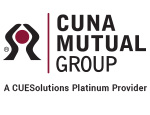5 minutes
Learn how examiners review your employee benefits funding program.
(This is the third article in a four-part series about funding a credit union employee/executive benefits program, based on guidance from the online NCUA Examiner’s Guide. Read part one here and part two here.)
The first step in exercising due diligence is learning exactly what “due diligence” means. When it comes to meeting the National Credit Union Administration requirements for investing money to fund credit union employee/executive benefits obligations, the online NCUA Examiner’s Guide is the place to start.
If you already use investments for funding certain employee/executive benefits, studying the information that NCUA examiners use should help you prepare for examinations and audits.
If you don't currently use these types of investments, this guide can be a resource to help you start a solid investment program that can be used to offset some of the growing costs for employee benefits and supplemental executive benefit plans.
Three Key Sections of the Guide
On the main page in the guide’s folder, “Employee Benefits and Investments for Employee Benefits,” NCUA establishes that it “… allows federal credit unions to fund employee benefit obligations with investments that are not subject to the investment limitations of the Federal Credit Union Act and Part 703 or, as applicable, Part 704 of NCUA rules and regulations.”
With this extra freedom, however, comes greater potential risk.
Here’s a sample of key sections within the guide that offer insight into what NCUA considers due diligence in prudently investing to fund specific types of employee and executive benefits:
Exam Procedures > Investments That Fund Employee Benefits for Federal Credit Unions
This section lays out the seven key steps an examiner follows to determine whether an otherwise impermissible investment is suitable for the employee or executive benefits being funded. It also details investment portfolio elements that should trigger extra scrutiny by examiners. For example:
When a federally insured credit union’s exposure to otherwise-impermissible investments exceeds 25 percent of its net worth and the risk is not borne by one or more beneficiaries, field staff must expand the examination scope of review.
Examiners are also instructed to review a credit union’s exposure to “single non-governmental obligors,” stating that these exposures shouldn’t exceed 15 percent of net worth. But the guide lists several mitigating factors that could make such an investment acceptable, such as when the beneficiary carries part or all of the risk in a 457(b) plan.
Of the general types of investments used to fund employee benefits, life insurance and annuities are probably more susceptible to hitting that 15 percent limit for any one obligor, compared to more traditional investment portfolios composed of mutual funds, stocks and bonds.
And even though the investments that underlie a life insurance policy may be diversified, the credit union’s risk lies with the life insurer’s viability. So, it’s always important to confirm a carrier’s financial stability and ratings.
Insurance Products Typically Used > Life Insurance
The guide goes into more detail about insurance products than other investment types used to fund employee benefits. This is because insurance products are not as commonly thought of as investment products compared to such traditional investments types as mutual funds, stocks and bonds. When conducting due diligence on these products, it is important to understand the types and features available and not solely rely on what an agent may present.
This section links to a page for annuities and a page for life insurance. The pages give examiners overviews of the types of annuities and life insurance policies that can be used for employee/executive benefits.
The annuities page overviews the main types annuities credit unions employ to fund employee benefits. A couple of reasons credit unions use annuities include competitive fixed crediting rates and the availability of features in certain varieties that can protect against downside risk, because the provider guarantees a floor for returns.
The life insurance page (and two sub-pages) provides an overview of the main types of policies credit unions employ to fund employee benefits—especially executive benefit programs.
The main life insurance page covers the difference between “institutional insurance” and “retail insurance,” which is a necessary point to understand for credit union executives and boards who are considering these products.
The key difference is that if you pay, say, a $5,000 premium for a retail life insurance policy, its surrender value at first may be something like $1,500. The cash values typically build slowly. But if you pay the same premium for an institutional policy, the initial cash value will usually be about $5,000. It looks more like a true investment. (Note: These numbers are for illustrative purposed only. They do not represent any specific investment, and may not actually be achievable.)
The trade-off is that, while an institutional policy generally has a modest rate of return, the retail policy has the potential to perform better over time. Retail policies are often used in split-dollar agreements that fund supplemental executive retirement plans.
Direct Relationship Requirement
Credit unions that use an otherwise-impermissible investment must show that it is “directly related to a defined benefit plan or employee benefit plan, when a credit union has an actual or potential obligation under the plan.”
This section summarizes how credit unions can demonstrate this direct relationship. In general, NCUA is looking for investments that have return profiles consistent with—but not more than—the projected expense.
With employee health benefits, for example, credit unions typically can expect a fairly consistent cost, so NCUA will be looking for an investment with a fairly predictable return.
Institutional life insurance can be a good fit for this—with the right type of policy, you get a consistent rate of interest as stated by the insurance carrier, and it typically has very low volatility. You can demonstrate to examiners how the investment ties to the expense, both through financial modeling and by examining the terms of the contract.
We’ve chosen these sections from the guide’s content on investments for employee benefits because they’re a good sampling of some of the information NCUA is expecting you to include when conducting due diligence. And while we’ve highlighted insurance products, you’ll also want to review what is expected when considering Equity and Commodity-Type Investments.
 Overall, the guide may help you see the process of conducting due diligence and maintaining a prudent process for determining how much to invest, and what to invest in for employee benefits expenses, through the eyes of an examiner—and that’s a valuable perspective.
Overall, the guide may help you see the process of conducting due diligence and maintaining a prudent process for determining how much to invest, and what to invest in for employee benefits expenses, through the eyes of an examiner—and that’s a valuable perspective.
John Pesh is director of executive benefits at CUESolutions Platinum provider CUNA Mutual Group. For more information about benefits pre-funding and executive deferred compensation plans, contact him at 800.356.2644, ext. 665.8223. For more information about becoming a CUESolutions provider, please email kari@cues.org.






